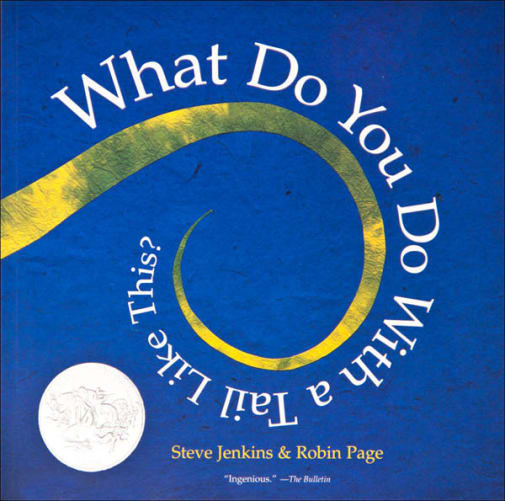What Do You Do With a Tail Like This?
SKU
000623
ISBN
9780618997138
Grade PK-3
These icons are designed to help you quickly understand and learn important information about our products.
Teaching Method
Traditional
Teacher-centered curriculum commonly used in classrooms that may include a text, teacher manual, tests, etc.
Charlotte Mason
A methodology based on the work of a 19th century educator who maintained that children learn best from literature (Living Books), not textbooks.
Classical
A methodology based on the Latin Trivium (three stages of learning), including the grammar stage (memorization and facts), logic stage (critical thinking), and rhetoric stage (developing/defending ideas).
Unit Study
A thematic or topical approach centered around one topic that integrates multiple subject areas.
Montessori (Discovery)
A methodology based on the work of a 20th century educator that emphasizes student and sensory-driven discovery learning and real-life applications.
Other
Other methodologies
Religious Content
Secular
Contains content contrary to common Christian beliefs (i.e. evolution).
Neutral
Avoids religious or theoretical topics or presents multiple viewpoints without preference.
Christian/Religious
Faith-based or including instructional religious content.
Learning Modality
Auditory
Learns through listening, talking out loud or reading out loud.
Visual
Learns through seeing, prefers written instructions and visual materials.
Kinesthetic/Tactile (Hands-On)
Learns through moving, doing and touching.
Multi-Sensory
Curriculum that employ a variety of activities/components.
Presentation
Sequential
Curriculum progresses through well-defined learning objectives. Emphasizes mastery before moving to the next topic.
Spiral
Topics and concepts are repeated from level to level, adding more depth at each pass and connecting with review.
Conceptual/Topical
Focus is on the “why,” often with a unifying concept as well as specific skills; coverage may be broader.
Teacher Involvement
Low Teacher Involvement
Student-led materials; parent acts as a facilitator.
Medium Teacher Involvement
A mix of teacher-led time and independent student work.
High Teacher Involvement
Teacher-led lessons; may utilize discussions, hands-on activities and working together.
Additional Materials Required
No other materials needed
Everything you need is included.
Other Materials Required
There are additional required resources that are a separate purchase.
Other Materials Optional
There are additional resources mentioned or recommended but are not absolutely necessary.
Consumable
Consumable
Designed to be written in; not reusable.
Non-Consumable
Not designed to be written in; reusable.
Our Price
$9.99 $9.99 $7.95
Rainbow Savings: $2.04
Description
This entertaining picture book teaches young readers about the "forms and functions" of specific body parts in different animals. A two-page spread begins with a question, such as "What can you do with a nose like this?" or "What do you do with eyes like these?" with unidentified close-ups of the same body parts from five different animals. The following two-page spread answers the question, revealing full-length illustrations of the five animals accompanied by explanations of the body part's function. For example, when answering the question "What can you do with a nose like this?" the book explains how a platypus uses its nose to dig in the mud, a hyena finds its next meal with its nose, an elephant uses its nose to give itself a bath, a mole digs underground with its nose, and an alligator breathes through its nose while hiding in the water. This Caldecott Honor Book features appealing collage-type illustrations of the animals, and the last four pages contain additional details about each animal accompanied by thumbnail illustrations of the animals. By Steve Jenkins & Robin Page. 32 pgs, pb. ~ Lisa
Details
| Product Format: | Softcover Book |
|---|---|
| Grades: | PK-3 |
| Brand: | Houghton Mifflin |
| Author: | Steve Jenkins and Robin Page |
| ISBN: | 9780618997138 |
| Length in Inches: | 9.769 |
| Width in Inches: | 9.781 |
| Height in Inches: | 0.12 |
| Weight in Pounds: | 0.33 |
Videos
Reviews

